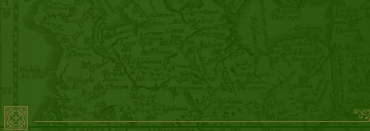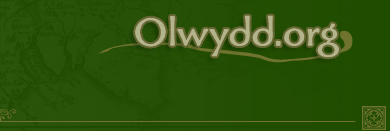Tanning is the term that covers the manufacture of clothing, armor, and other articles from animal products such as hides or pelts. There are a few basic supplies that you'll require:
- hide scraper
- tanners' shears
- bone bodkin (a sewing needle, not to be confused with bodkin weapons or arrowheads)
- stout thread
- leather lotion (for skins and hides)
- pelt potion (for pelts)
- the desired pattern
- the necessary hides, skins, or pelts
These items may be purchased at a tanning supplies shop. At the current time, it appears that there are shops of this kind in the Crossing, Langenfirth, Aesry, and Shard. All are located at the local tanners and all carry the same supplies and patterns.
STEP 1: The Pelt - This needs to be a good quality
skin, hide, or pelt. The best quality would be an arranged, perfect
Ranger-skinned pelt as the skin's caliber will effect the quality of
the item to be produced. It will need to be completely scraped with
a hide scraper; to do this, scrape <pelt/skin/hide> with
scraper <quick/normal/careful>. Do this repeatedly until
it's scraped clean (this will work your Mech Lore and your
Skinning); hopefully you'll avoid errors. Now, take your leather
lotion (for skins or hides) or pelt potion (for pelts) and pour
<lotion/potion> on <pelt/skin/hide>. Do this
repeatedly until you see: That seems to be all the tanning salts
this <pelt/hide> will need. Now let it cure, and it'll be
tanned. One bottle of lotion or potion will last for 20 pours,
which ends up being on the order of 6 or 7 pelts. You can
look bottle to see how much you have left.
STEP 2: Wait - When you look pelt, you'll
see that it's still curing and isn't ready yet. Stow it away
somewhere if you don't want to lug it around; it'll be curing for 8
hours (one and a third Elanthian days). (You do not have to be
awake in Elanthia all this time.)
STEP 3: The Pattern - Once you have your properly
cured pelt, it's time to select a pattern
for what you would like to make. The categories of items are
Leather Armor, Reinforced Leather Armor, Shields, Weapons, and
Miscellaneous. At the current time, the only Shield and Weapon
patterns available are a leather shield and a sling. Miscellaneous
includes a variety of clothing, containers, and drum skins.
Patterns can be reused (a good thing, since they're not cheap,
running up to a gold each). Once you have your pattern,
put pattern on <pelt/skin/hide>.
STEP 4: Cutting and Assembly - Now take your
tanners' shears and cut my <pelt/skin/hide>. This is
one of the crucial stages where you might ruin the pelt; it appears
to depend quite a bit on Mech Lore, and it also appears that some
patterns are easier than others. You will now have some pieces;
some items take more than one pelt to make, so you may have to go
through steps 1 to 4 again to make the other necessary pieces. If
you have a multiple-pelt pattern, you'll need to bundle
pieces. The result will be a complete set of pieces (for
single-pelt patterns, you'll have a set without bundling).
STEP 5: Sewing - Time to get out that bone bodkin
and watch your fingers! poke set with bodkin to make the
holes for stitching your set together. Now, lay your set aside,
take your thread, and put thread in bodkin. Put away your
thread, pick up your set, and string set. If all of this
goes well, you'll have a nice new tanned item.
If your Skinning and Mech Lore is on the low side, start with something simple, like a pouch or sack; you can work up to the more difficult patterns as you gain experience. The word is that not even the highest-level Rangers can make everything, so it'll be a career-long effort. Items which are tanned are also given a rating based on their quality. For fluff items, this seems to have little impact, but for armors it's a bigger deal.
- Crude
- Soddy
- Rough
- Home-made
- (no adjective)
- Elegant
- Well-made
- Sturdy
- Superb
- Superior
- Perfect


